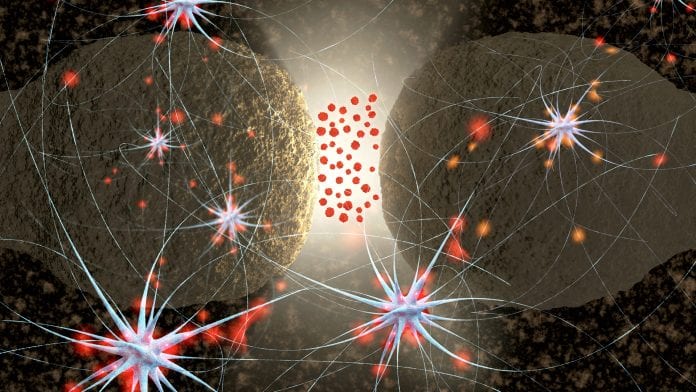
Known for its role in relieving depression, serotonin neurons could also help the brain execute instantaneous, appropriate behaviours in emergency situations.
According to a Cornell study published in Science, researchers studied the brain activity patterns in mice, and found that if a mouse was experiencing a threat, dorsal raphe serotonin neurons would fire during movements. But, when there was a calm, positive environment, these serotonin neurons would fire during pauses in active behaviour.
THINK FAST
Melissa Warden, assistant professor and the Miriam M. Salpeter Fellow in the Department of Neurobiology and Behavior explains: “This switch really surprised us.”
“It was our first clue that something really strange might be going on in the brain in emergency situations.”
In emergency fight-or-flight situations, behavioural choices are different from the decisions an animal might make in less-critical situations. For example, if a mouse sits in the middle of an exposed field and a hawk spies it for food, the mouse may see the hawk start to swoop in and the mouse’s survival instinct tells it to run. Such an escape response is appropriate.
“But if the hawk is flying overhead and it hasn’t seen the mouse, but the mouse has seen the hawk, it is appropriate for the mouse to freeze in place to avoid being detected.” Warden says.
“In this situation, freezing in place is a better decision than attempting to flee, because the odds of survival are higher.”
In high-threat situations, stimulating serotonin neurons elicits escape attempts. In lower threat environments, stimulating these neurons causes pausing.
Thus, stimulating serotonin neurons is probably promoting the context-appropriate response. “It may cause animals to react to their environment, to do what’s appropriate in light of the current situation.” Warden adds.
The world of serotonin neurons
Serotonin sends indicators all over the brain, like a global communication centre, by fully understanding how this system prompts different behaviours in different environments could in turn shed light on the role of other systems within the brain and enable researchers uncover more about the world of neurology.
Warden adds: “Considering the widespread distribution of serotonin neurons throughout the brain, this finding raises the possibility that the ’emergency brain’ operates in a fundamentally different way.”






















